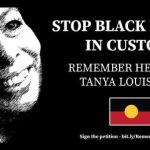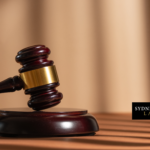Jurors Forced into a Guilty Verdict

In most situations, juries are required to reach a unanimous verdict – which means that every juror must either find the defendant guilty or not guilty. The exception to this rule in NSW is ‘majority verdicts’, which allow verdicts of all but one juror in certain circumstances.
In any event, jurors are meant to make up their own minds about whether a defendant is guilty or not guilty – they are not supposed to reach verdict to please other members of the jury, and certainly not because they are scared of them.
Jury Coercion
However, this is precisely what may have happened in Smith v Western Australia [2014].
The defendant in that case was convicted after a jury trial; but after the trial, a note was found in the jury room which read:
“I have been physically coerced by a fellow juror to change my plea to be aligned with the majority vote. This has made my ability to perform my duty as a juror on this panel [sic].”
There is an ongoing investigation into whether the contents of the note are true. If so, it could potentially result in a mistrial and a new trial may be ordered.
Verdict According to the Evidence
Jurors are required to swear an oath under section 72A(1) of the Jury Act 1977 (NSW) to give true verdicts according to the evidence.
To protect against undue influence, and to promote open discussion within the jury room, section 68B of the Act prohibits jurors from discussing jury deliberations outside the jury room without the consent of, or at the request of, the judge or coroner.
Disclosing Verdicts of Jurors
An interesting issue which arose in the case of Smith v The Queen [2015] was whether the judge is permitted to disclose how individual jury members voted, and whether the parties are entitled to that information.
The case concerned a man on trial for sexual assault. During the trial, the jury handed up three notes to the judge, the first of which asked for clarification on “beyond reasonable doubt” and the definition of “consent”. As is normally the case, the judge consulted with the defence and prosecution, the answered those questions.
There was a second note in which the jury said they could not reach a unanimous verdict. As usual in such situations, the judge gave them a “black directing’ – telling them to be patient and persist with their deliberations.
After two days without a result, there was a third note which stated ‘we are at a deadlock’ and outlined how each jury member had voted. This put the judge in a tricky situation.
To ensure a fair trial, judges normally read jury notes out to the parties, giving them an opportunity to make submissions in the absence of the jury before the judge answers the enquiry. This general rule applies where the material is relevant to an issue before the court; Ucar v Nylex Industrial Products Pty Ltd.
However, the interests of disclosure must be balanced against other considerations, one of which is that interim votes and voting patterns of the jury should not be disclosed.
The trial judge ultimately decided not to disclose the information about how the jury voted. He then told the jury that 11 out of 12 votes would be enough for a conviction by “majority verdict”. Within half an hour, the jury returned with a guilty verdict.
The High Court Appeal
On appeal, the High Court found that the judge was right not to disclose how the jury members had voted, because the voting patterns of jurors are not a relevant matter.
The Court also found that there was nothing wrong with the judge’s directions to the jury. Accordingly, the appeal was dismissed and the conviction confirmed.






